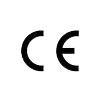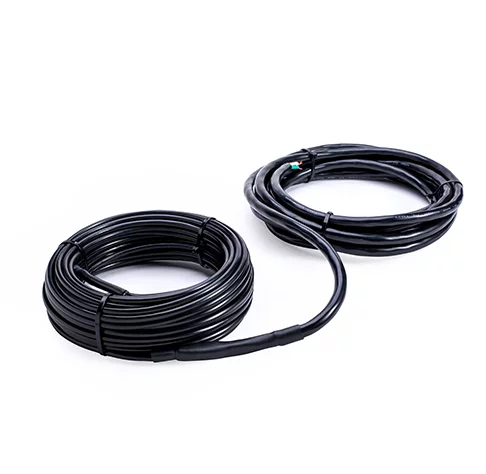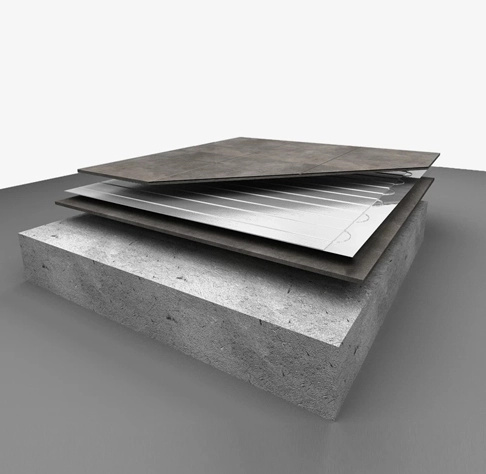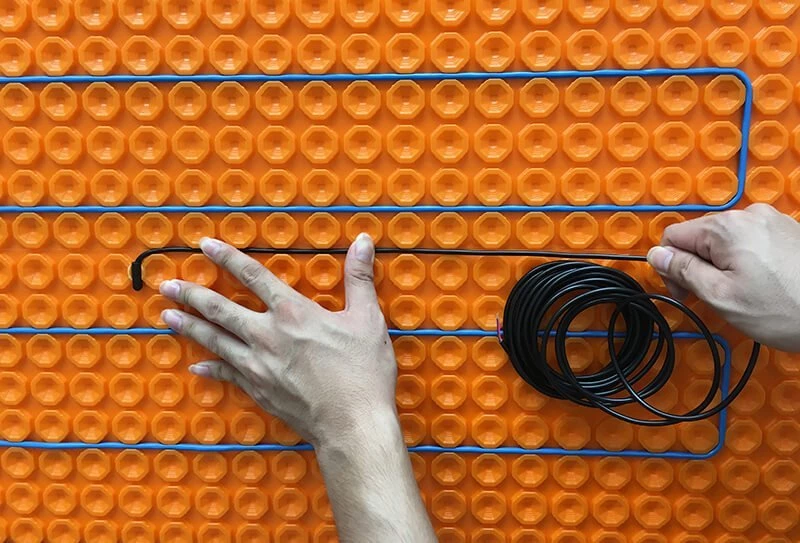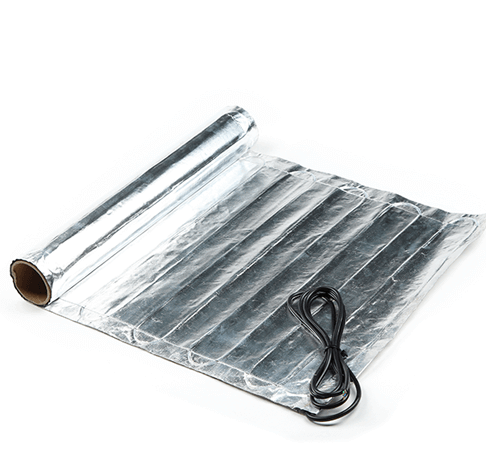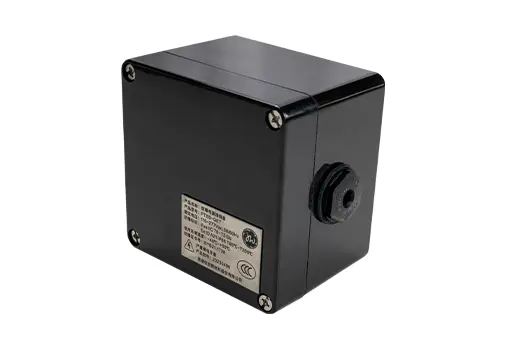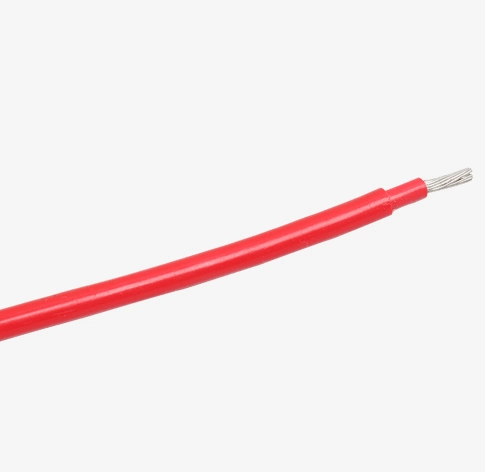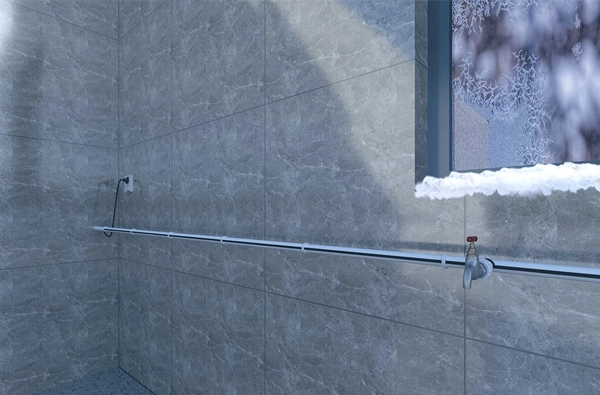Are you looking for an underfloor heating guide for your new house?
Or you are looking for an underfloor heating guide for
Or are you renovating your house in readiness for the cold season but you don’t have an under- roofing guide?
Is your answer, yes?
Then this is the guide you have been looking for.
Here, is a simplified look at the underfloor heating guide. At the end of this guide, you will be an expert on the underfloor heating system.
Take a look.
Chapter 1: Electric Floor Heating System
Perhaps the relevant question that you are asking yourself is how an electric floor heating system works.
You don’t have to worry
The working principle of an electric heating system is quite simple.
Here is how it works.
The heat from the underfloor heating system comes from electricity through cables that are in the loops in the floor area. A thin layer is spread over the underfloor cables to give a smooth surface after which you lay the floor on top.
An insulation board laid under the heating cable ensures an energy efficient system. The availability of a thermostat on the wall allows you to control the temperature in the room.
With an electric floor heating system, there is no need for an additional heat source in your room since it is a complete system.
What does Electric Underfloor Heating Include?
An electric underfloor heating system includes the following.
Floor heating cables
Floor heating cable
Underground heating cables are particularly hardwearing, and they are common in the application set in concrete slabs and other floors. The purpose is to maintain a suitable temperature condition and protect against freezing.
Floor heating cables offer to heat both on the floor and the entire room. You should set the cables by local regulations.
Materials significantly affect floor heating cables resistance and are least affected by changes in temperature. Therefore, a heating cable heats itself anytime the power is on.
A control device usually a thermostat enhances the life of a cable heating element.
Floor heating cables have a relatively low installation cost, and their maintenance expenses are reasonable. A suitable choice for a floor heating cable is the constant wattage heating cables.
These cables can convert 100% electrical energy into heat without energy loss. There are two types of floor heating cables, that is single and twin conductor floor heating cables.
Both floor heating cables are meant for European markets and have a rated voltage of 230V. Both wires are waterproof meaning you can use in either dry or wet floors.
Another similarity is that they need a thermostat to work. However, there are two regular types of a twin cable and three regular types of a single cable.
A single conductor structure has two distinctive power source connection. It consists of the inner conductor of tinned copper, shield, conductor insulation, and the outer jacket.
The shield can screen all electromagnetic radiation generated in the inside. The jacket’s material is 100% waterproof PVC to make it suitable for use in wet areas.
On the other hand, a twin conductor structure allows for the connection of power from one connection point. It consists of an inner conductor, insulation, an outer jacket, and a shield.
A twin conductor cable features a fluoropolymer like FEP or ETFE.
The solution for long Underfloor Heating Cable.
You cannot cut Heating cables. However, they are usually preassembled meaning you can seek an expert’s help. The expert will determine the right size of the floor heating cable and resistance based on your floor area and heating requirements.
Once you determine the resistance of the wire, you can calculate the liner watts and the total power. Hence, unless under particular circumstances under an expert, you need to avoid cutting the underfloor heating cables.
Why?
Cutting a wire flor heating cable reduces the resistance meaning that at the same voltage, there will be a higher power generation. This can lead to overheats and burns or safety problems.
Also, you will not be in a position to connect the circuit without professional connection kits.
Instructions for Floor Heating Cable Installation Under Hardwood Flooring
Follow the following steps when installing a heating cable under hardwood flooring.
Determine the heated area and sketch Send it to Jiahong for price quotation. Determine the suitable thermostat location and include that in your design.
Locate a thermostat about 5 Feet off your floor and ensure it is on an inside wall. You should not place the thermostat in places with excessive heat or direct contact with sunshine.
Install wood sleepers. Sleepers should be ¼ to ¾ inches thick and about 2 inches wide. You need to install strips at 12 to 16-inch intervals and a 2-inch gap left at other strips ends to allow heating wires to cross from a section to another.
Use nails, screws, or hot glue to secure strips to the floor. Maintain at least 3- inch distance from permanent fixtures and walls.
Install your heating system. This should start from the closest floor point to the thermostat. Run the heating cable parallel to wood sleepers back and forth to get all sections filled in.
Install a temperature sensor probe. This should be at least 12 inches from the wall. The sensor probe should not cross the heating cable.
Embed your heating system with a leveling
Install your hardwood flooring.
Program your thermostat to a maximum of 26.5°C or 81°F. The reason for this is to avoid causing warping or drying the wood out.
Testing the Underfloor Heating Cable
You need to verify your floor heating cable at least thrice, that is, before installation, after laying the cable and after putting the floor finish. Doing so ensures early detection and repair of damages to the wire.
Compare the readings of cable resistance for conductors and resistance of insulation against the resistance recorded. You can check this across the particular cable in our insulation manual or on the cord tail label.
You can use a Multimeter as a resistance tester since it is easier to use. It will also alert you of any breaks and malfunctions in the cables or the sensor wires.
If there is a problem with our cable products, we are ready to help. We will offer a replacement at no cost. In case you damage your cable accidentally, you don’t have to panic.
Reach out to us, and we will help you get a compatible replacement.
Underfloor Heating Cable Operating Tips
Here are tips when you are operating underfloor heating cables
Before installation, check the building floor heights with experts to guarantee appropriate underfloor cable heating and installation.
Add thermal insulation to fasten heating and reduce energy consumption.
Install each sensor in a separate conduit without the power cables.
Capture photos of the completed installation which you can use for future references.
Test the cables and record the results.
When installing thermostats, you need to retest the cable continuity insulation resistance and ohms. This will help in identifying potential problems.
Never cross heating cables
Avoid tapping the cold tail connection or end joint
Never cut the wires
Avoid spot dabbing tile adhesive for quick installation. This could create air pockets underneath the tiles.
Don’t leave the cables exposed over the covering of your floor.
Troubleshooting
One drawback of using insulated heat cables in concrete floors is the difficulty in fault location. However, if you have a well-designed system, chances of heating failure are minimal, and you can quickly identify a fault.
There are three common underfloor cable heating faults.
Open circuit “clean break”- it implies there are no earth leakages but a continuous circuit.
Earth fault- it implies broken insulation; however, the cable is functional and shows correct reading in resistance.
Earth fault and heating cable damage- here, some heating cable strands have been damaged, and cable insulation is broke.
Here is how you can use a multimeter to identify an underfloor heating cable fault.
Disconnect the heating element from the mains power.
Select Ohms (resistance) on your multimeter to test for resistance continuity of your heating cable.
Connect the multimeter’s RED lead to the heating cable’s live wire (Red or Brown). Connect the multimeter’s black lead to the heating cable’s black or blue cord.
Conclusions
A multimeter screen indicating ‘O.L’ implies a clean break in your heating cable
Unstable screen readings indicate broke or damaged wire.
Unstable screen readings which not indicated on the cable chart implies an entire cable but with a possibility of lengthened or shortened cables.
Stable screen readings indicated on the manual implies your heating cable is intact.
Floor heating mat
Floor heating mats are ideal for regular shaped rooms, and you can use them as a primary heat source. They are suitable for permanent floor finishes, including ceramics.
Jiahong offers a range of floor heating mats ideal for different floor settings.
The big question is, can you cut a floor heating mat?
Yes. You can cut a mat to fit perfectly on the floor space but take care not to cut the heating cable. However, an electrician should do the cutting for you to minimize hazards.
Alternatively, you can order the right size for your space to avoid cutting.
Jiahong mats come in 120V, 230V or 240V depending on the order country. They all have thin wiretapped and spaced in a mesh to facilitate installation.
Our floor mats are thin, thereby reducing the effect of raising the floor height. Jiahong designs and sells customized floor heating mats. You can get a mat personalized for your space by filling in a few features of your house here.
Consider the following factors when buying an electric floor heating mat:
The space that you intend to heat using your floor mat. You need to draw a sketch of your floor and give an expert for recommendations.
Check on the voltage as each country has its The US requires 240V for commercial use and 120V for residential purpose.
Check on the waterproof properties of the Check out Jiahong’s waterproof floor heating mats.
Heating requirements and heat loss
These mats come with a sensor that you can use in regulating the temperature.
Our heating mats are pre-spaced and pre-adhered to allow you to focus on laying your mat swiftly and accurately. The adhesive qualities enable the mat to reposition when you make a mistake when putting it.
You need to deduct fixtures like cupboard when measuring the floor plan to get the right size of your floor area’s heating mat. To reduce heat loss, insulate your mat by laying an insulation board first using a flexible tile adhesive.
Be careful to avoid tearing the heating mat. Also, when installing, ensure it does not touch your feet to ensure safety. You can either use a self-adhesive tape or a self-adhesive backing straight into the insulation board.
Embed the heating system into the slab before tiling or tiled directly over.
Types of heating mats
The following are the typical floor mats available in the market.
Warm-M Electric Floor Heating Mat
Having a 120vac and 240Vac rating, this heating mat is designed for Northern America importers. Its installation is flexible in different shapes and locations and works well in many floorings.
Mat-D Radiant Heat Mat
This mat is popular in Europe markets, and its regular types are 150W/m and 2100W/m2. It is commonly used for engineered wood floors, brick floors, stone, tile, and laminate, among others.
It’s 6.6mm thick, and its regular width is either 48 or 50cm. It also features a 2.5m standard cold lead.
Mat-S Floor Heating Mat
Meant for European importers only due to its 230v rating, this carpet is as thin as 2.6mm. Its popular types are 150W/m2 and 100W/m2. This heating mat can be used on all kinds of floorings.
Mat-AF Floor Heating Pad
Foil heating mat
30 Years Lifetime with 25 Years Free Warranty
Mat-AF Floor Heating Pad, also called foil heating mat, is made with an aluminum cover to shield all electromagnetic radiations, this heating mat is suitable for under-carpet and laminate floor heating It can also be used on engineered wood among other kinds of floors.
It is specifically meant for Europe (UK) market and its size options is 150W/m2, 80W/m2, and 140W/m2.
Both electric floor heating cables and mats are ideal for different uses.
Mats are cheaper and easy to install. On the other hand, cables are relatively harder to install and are costly.
Mats are suitable for rectangular areas with little obstacles while cables are right for areas with angles and obstacles.
Thermostat
The thermostat is a device that you use to control the temperature of a room. Electric underfloor heating thermostat control floor temperature separating it from the room temperature.
Jiahong floor heating thermostats will help you in controlling the heated area of your floor. There is a wide variety of Jiahong floor heating thermostat that you can select.
Figure 8: Thermostat
You set a preferred temperature on your thermostat. To warm up the room, switch on the thermostat.
Once the temperature reaches the desired level, the thermostat switches itself off to prevent overheating. You need to locate a thermostat in an area with fresh air flow to accurately sense the temperature change.
Click HERE for a short video on how a thermostat works.
A right thermostat will react to low temperature and automatically switch the heating system. Thermostats can either be mechanical or digital. However, the main types of thermostats are:
The difference between European and American Thermostat is they have different Ground Fault Circuit Interrupter (GFCI) standards.
This is because these regions have different voltage requirements for heating systems as we have seen earlier. GFCI is a safety device that interrupts power to the radiant floor heating system.
This is where there is a ground fault in electric current which can cause a fire. You need GFCI for electrical outlets.
At Jiahong, we customize each thermostat to fit your region’s requirements.
The common thermostat problems and solutions include
Thermostat overheating. To prevent, make sure that the electrical panel has the capacity for underfloor heating. Also, check the thermostat requirements to avoid overloading it.
The system is shutting off suddenly. Here, the problem has dirty internal components as a result of sooth building upon the elements. You need to clean up the thermostat and tighten loose connections.,
Mismatch of room and set temperature. Again, this is caused by having dirty internal components. to prevent this, ensure you clean the thermostat and install it away from sunshine.
Erratic thermostat display. If the thermostat’s screen is blank or doesn’t show anything, it can be old batteries so consider a replacement. The other problem can be a tripped circuit breaker.
A dysfunction thermostat. If the thermostat is not working, check on the fuse and batteries. Replace the igniter if it is broke.
Thermostat Replacement Tips
Here are a few tips that you can use to replace the thermostat of your underfloor heating system.
Turn off the mains power source
Remove the old thermostat’s face
Take a photo of the wires – while this step is not necessary, photos might act as future references.
Disconnect heating system wires from the old thermostat.
Remove the old mount.
Fix your new thermostat, mount it, and connect it to heating system’s wires.
Screw the faceplate mount well on the wall
Attach the face of your new thermostat
Power the heating system
Configure the temperature setting of your new thermosta
Chapter 2: Installing an electric Floor Heating System
Before installing your electric floor heating system, consider the following.
The first consideration is to check if the underflow heating system is ideal for your house. There are several other options that you can have, such as radiators.
You need to analyze the benefits and shortfalls of each to come up with the best option. However, the underfloor heating system has several advantages than other options.
If perhaps you want to replace your radiator with an underfloor heating system, you need to consider if it is possible. To assist you in this, check on the heat output as well as the heat loss amount.
The purpose of this is to help you in determining the underfloor heating system will meet the floor heating requirements.
This question is crucial if you want to renovate your old house. The answer is yes; you can fit an underfloor heating system in your old home as well as a new home.
If your radiator is not offering you enough heat, you can supplement it with a warm water underfloor heating system. The advantage here is that you can zone your house in that boilers heat some parts and others by the underfloor heating system.
Yes, you can by using a thermostat. All you have to do is configure your thermostat settings depending on your heating requirements.
A thermostat will enable floor heating when the floor room temperature is lower than the preset amount it will stop warming once the room achieves the intended heat level.
Underfloor heating system come in different heat output levels. What you need to know is the heat requirement of your house.
Maximum heat output of a screed floor is 100W/m2 while that of floating and timber floors are 70W/m2.
Click HERE for a short tutorial on how to install an electric heating system in your room.
Factors Affecting Underfloor Heating Heat Output
Floor size
The larger the floor area, the higher the maximum heat output of a floor heating system. This is because of the heat loss experienced in a large room.
If the heated floor area is smaller than the room, it can be hard for a floor heating system to offer enough heat unless you insulate the space.
Floor type and floor temperature
The higher the floor temperature, the higher the heat output. However, it is essential to note that while increasing floor temperature increases heat output, the results depend on the floor finish.
Thermostat choice and air temperature
Thermostat control floor temperature depending on either the current floor or air temperature. Therefore, you need to select a quality thermostat that will detect a change in these two parameters.
Faulty thermostats will lead to the room over or under heating, which can cause damage to the floor surface.
Floor insulation
Right floor insulation increases heat output. Therefore, increasing insulation boards under your floor heating system reduce heating bills.
A cavity wall and roof insulation keep heat inside the room, which in turn lowers heat output requirements.
You can consider the following factors if you want to overcome space limitation when installing an underfloor heating system
Consider thermal blocking
Thermal blocking affects the underfloor heating system. Therefore, ensure that nothing is blocking the emitted heat.
For instance, furniture and rugs can hinder heat emission.
Can underfloor heat leak
Insulate the floor area well before placing the heating system to prevent heat loss. Proper insulation prevents leaking.
System damages occur during installation when there is damage to the heating mat or cable. You can quickly identify any injury arising at this stage and repair them.
Strapping installation
A strapping installation is a form of underfloor heating cable installation that only requires screws, hot glue, and staples. This method is fast and straightforward to interlock as you need straps.
Good strapping reduces the use of self-reveling cement and offers electromagnetic free field. This method is compatible with different floor surfaces.
Membrane installation
This method involves the use of membranes which you install directly over the subfloor acting as waterproof and crack isolator. You can use this method even in substrates that are problematic like cracked screeds and wood.
After that, you then install the floor heating system and fit the floor cover. A suitable membrane offers a cost-effective option of adding warmth to your home.
Conclusion
In summary, the underground floor heating system offers more than comfort to your room. It is vital that you engage a professional when installing one in your room.
At Jiahong, we guarantee you of quality underground floor heating systems that will offer quality services to your room.
Get in touch with us and experience a whole new world of underground floor heating services.






